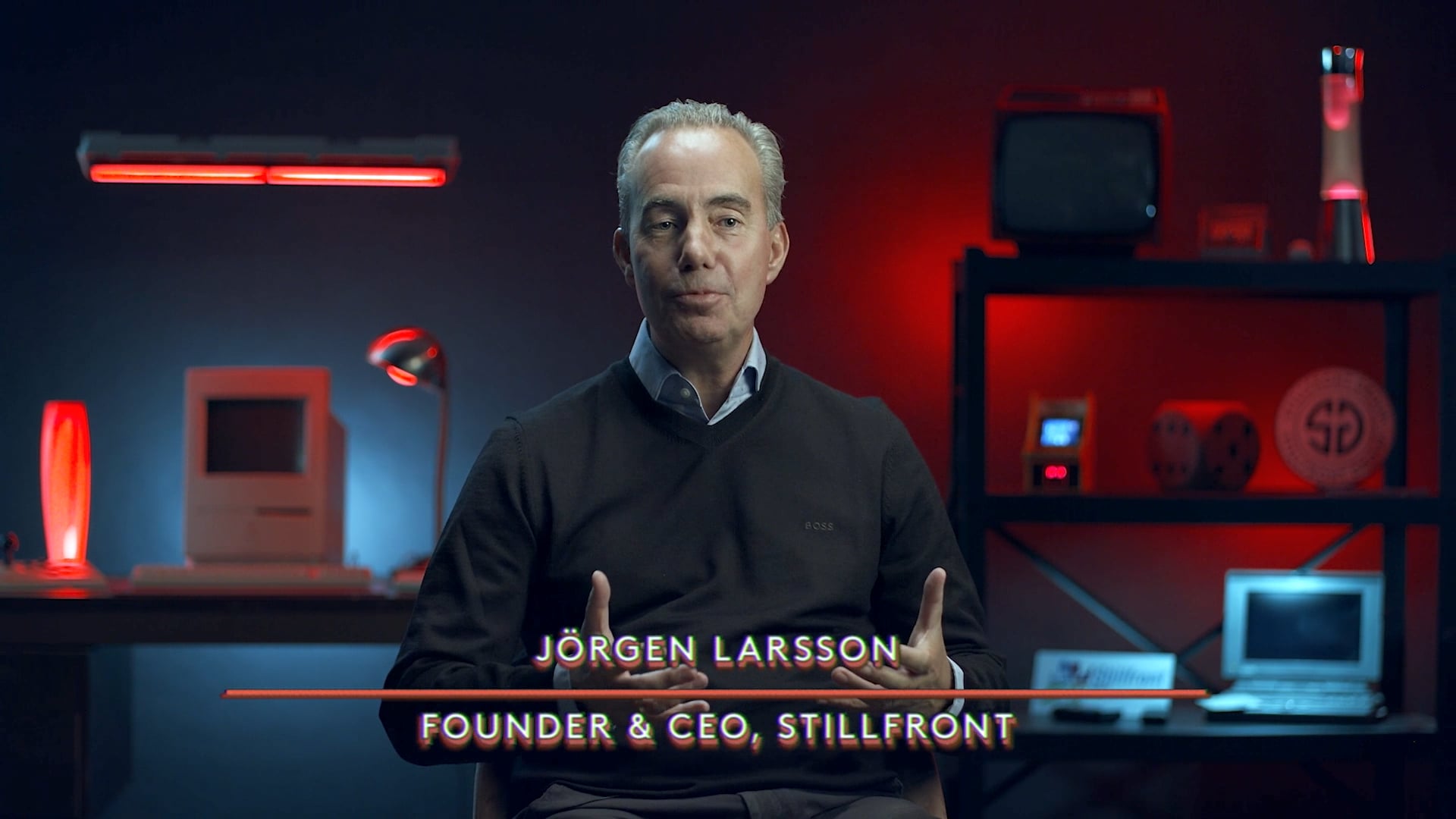Our story
Creating a positive universe of games
Stillfront is a global gaming company. We develop a wide range of digital games that attract almost 50 million people each month. From well-established franchises like Home Design, Big Farm, and Supremacy to niche games, we span many different genres, including strategy, simulation, RPG and action, and casual and mash-up games.
We believe gaming can be a force for good. And we want to create a gaming universe that is digital, affordable, equal, and sustainable. So, we focus on developing games that are all about having a rewarding hobby, a great social experience, or a strategic challenge.
Our HQ is in Stockholm, Sweden, but our game development is done by teams and studios all over the world. Our main markets are the US, Japan, Middle East and Africa, Germany, and the UK.

Time-traveling through play
We’re proud of our achievements and the hard work we’ve put into making Stillfront what it is today. Take a look back through the moments that made us who we are.
Making impact on the gaming industry
Our mission is to positively impact peoples’ everyday lives by creating a social, entertaining, and affordable gaming experience. We focus on developing free-to-play (F2P) games. We work closely with our users to develop, test, and optimize games, which helps to build strong communities of loyal fans who determine the future of our games.
Our studios develop and publish games in-house or in collaboration with other studios in the group. Including development and publishing in-house means we’re responsible for a game’s entire lifecycle while ensuring high profitability.
Our studios are spread across the world, and have significant knowledge of their particular markets. Having multiple game studios and teams that work together across different geographies and genres has many benefits, including the ability to release adapted versions of existing game franchises in multiple markets.
Our studios offer games in different genres and markets. We’re flexible with the allocation of marketing campaigns across the group to make sure that investments are made in the games and marketing channels yielding the best returns at any given time.
We developed a unique operating model, Stillops, to ensure any studio or game team joining Stillfront can access the group’s resources, data, and tools while maintaining their own identity.
Collaboration between studios is a crucial part of the Stillops platform. Our studios work together on many projects, from sharing best practice to developing new games. Our data and analytics team works across the group to make sure every studio and team has access to our data and can benchmark KPIs from across the group.
We’ve built knowledge centers in some studios that provide expertise and services to the rest of the group. Using existing resources allows us to see benefits without creating large central functions. Our hubs include for example the Global Marketing Hub, regional Finance Hubs, and the Payments hub.
Play the best, be the best
Jörgen Larsson, a Swedish serial entrepreneur, founded Stillfront in 2010. He had a vision to build a global gaming company by inviting the best independent digital games studios to join him. Listen to his story.



